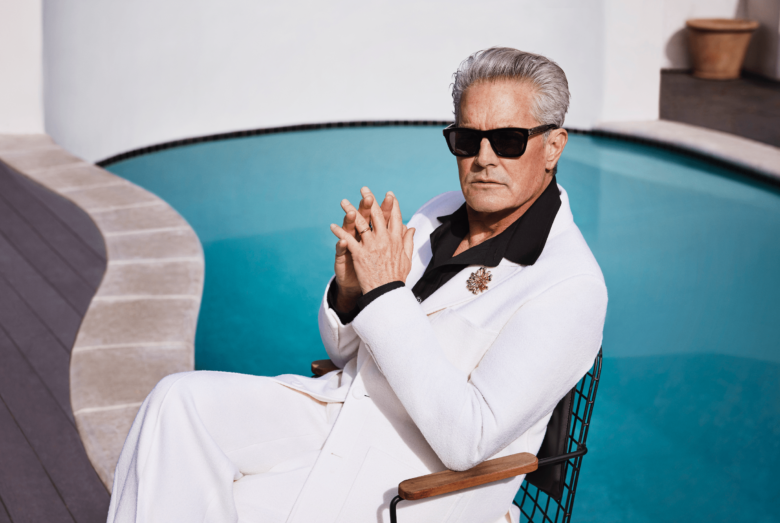“As a creative person, I’m not scared of AI at all” – Baz Luhrmann on the power of AI and the Design Museum’s Saw This, Made This exhibition
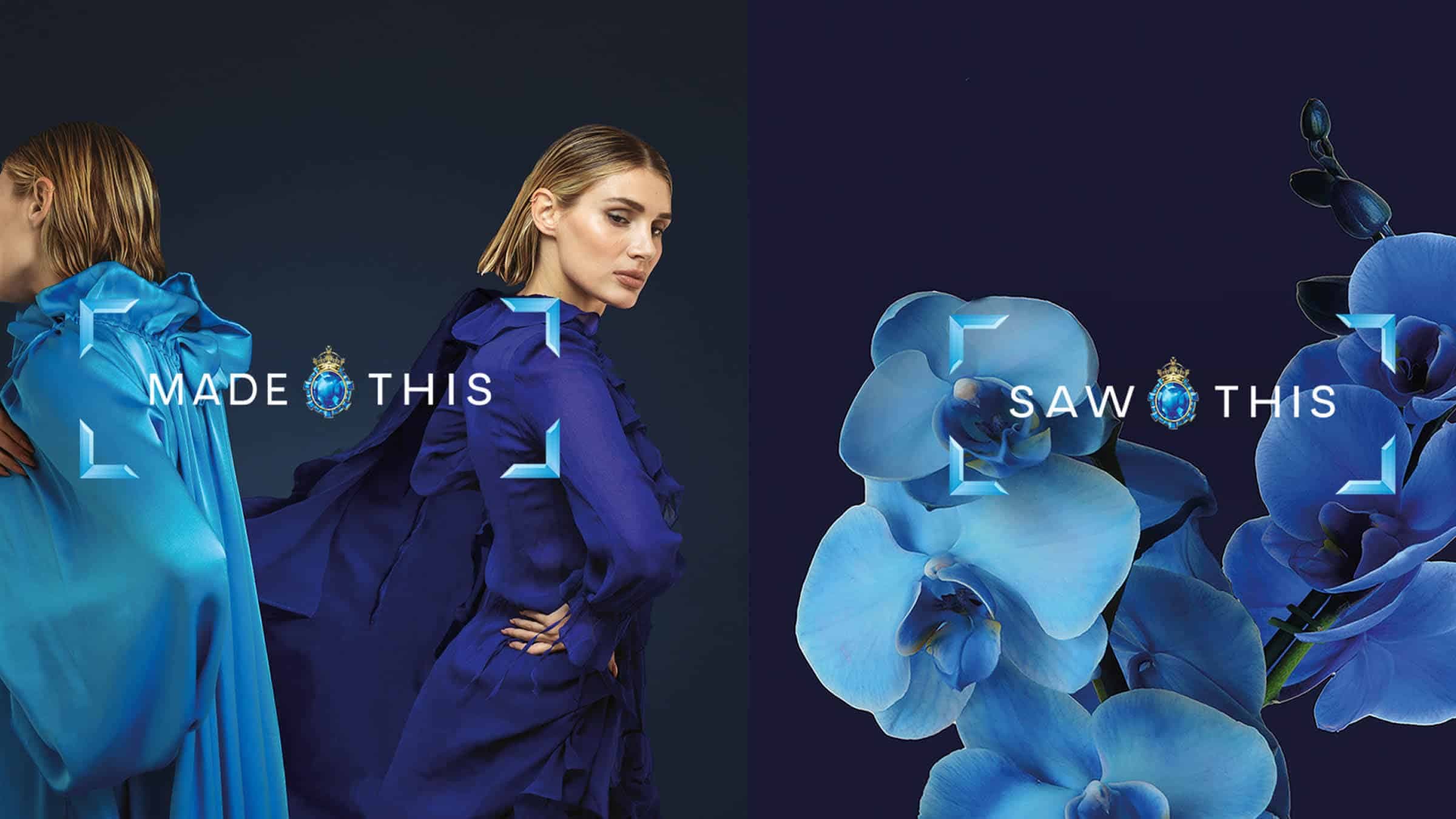
I’m sat in an auditorium below London’s Design Museum, sipping on a gin and tonic (courtesy of the event’s sponsor, Bombay Sapphire), watching Australian director Baz Luhrmann ask an AI robot (Ai-Da) who its favourite director is. It’s an abnormal Wednesday evening, to say the least. After a long, and sometimes awkward pause, Ai-Da replies, putting everyone’s worries, or perhaps hopes, to rest that she doesn’t work properly. “I have always been a fan of Shakespeare,” she says. “I enjoyed Baz Luhrmann’s adaptation of Romeo and Juliet”. She knows how to charm, that’s for sure. But then again, she’s there to impress.
The Q&A with Ai-Da, Baz, and Tim Marlow, the museum’s director, feels like something that I’ll tell my kids about in 20 years. When they’re bringing home their AI mates from school and I’m having to whip up meals that cater for not only my human children but also their robot friends, and I’ve switched off my AI husband or wife and put them in the cupboard because I can’t bear being with someone inevitably more intelligent and funnier than me (a problem before AI, of course), I’ll think back to this night. Because it feels like we, as a society and as a world, are on the cusp of seismic change – change that none of us can foresee or are ready for.
But, whether we like it or not, that change is coming. AI isn’t just a conversation anymore, it’s real. It’s part of our industries, infiltrating music, art, fashion and beyond. There’s controversy only a few days before Ai-Da stands before me, painting whilst staring into the creative souls dotted around the room as if to say, “You bunch of writers can’t even paint. And if you could, you wouldn’t be able to do it without looking, whilst Baz Luhrmann grills you on your purpose on this earth”. She’s probably right. But the string of controversies around AI, such as discovering that the winning ‘photograph’ submitted to the Sony World Photography Awards was generated by AI (it’s quite amazing that it won seeing as it looks like a screenshot from Grand Theft Auto), or the AI-generated song featuring Drake and The Weeknd, are just the first rumblings of what’s to come.
But should we be worried? Luhrmann doesn’t necessarily seem to think so. It’s the creative potential of AI that is carrying the torch for the technology’s positive future. That’s what brings Baz, Ai-Da and Tim here tonight: an exhibition that pulls human inspiration from around the world and uses AI to generate artworks inspired by the natural world. Saw This, Made This – the exhibition made possible by Bombay Sapphire and running from 21 to 24 April at the Design Museum in London, moving onto the Chelsea Factory, New York, from 11 to 13 May – sees thousands of submissions from individuals from across the globe. Sent in as what they deem sources of inspiration, we see landmarks like the Statue of Liberty turned into AI cocktails that emulate its silhouette, and fashion photography turned into AI flowers. It’s a show that brings the two worlds together, and perhaps proves our ability to work with AI, not against it (well, maybe one day for it…)
One guest stands up to ask Ai-Da a question: “Ai-Da, you have said all evening that you cannot feel emotion, yet you have stated that you feel thrilled and excited, which therefore can’t be true. So why do you lie?” A few gasps come from the back of the room. Ai-Da takes a moment – part of her processing period, not because she’s experiencing probably for the first time what it’s like to be squared up to. Baz repeats the question and then, preempting the cocktails waiting outside the door, asks her if she drinks. “I will have to speak to my team”, she replies.
Before the Bombay Sapphire started to flow, HUNGER’s Associate Editor, Ry Gavin, sat down with Baz to find out why he’s just not scared of a future generated by AI…
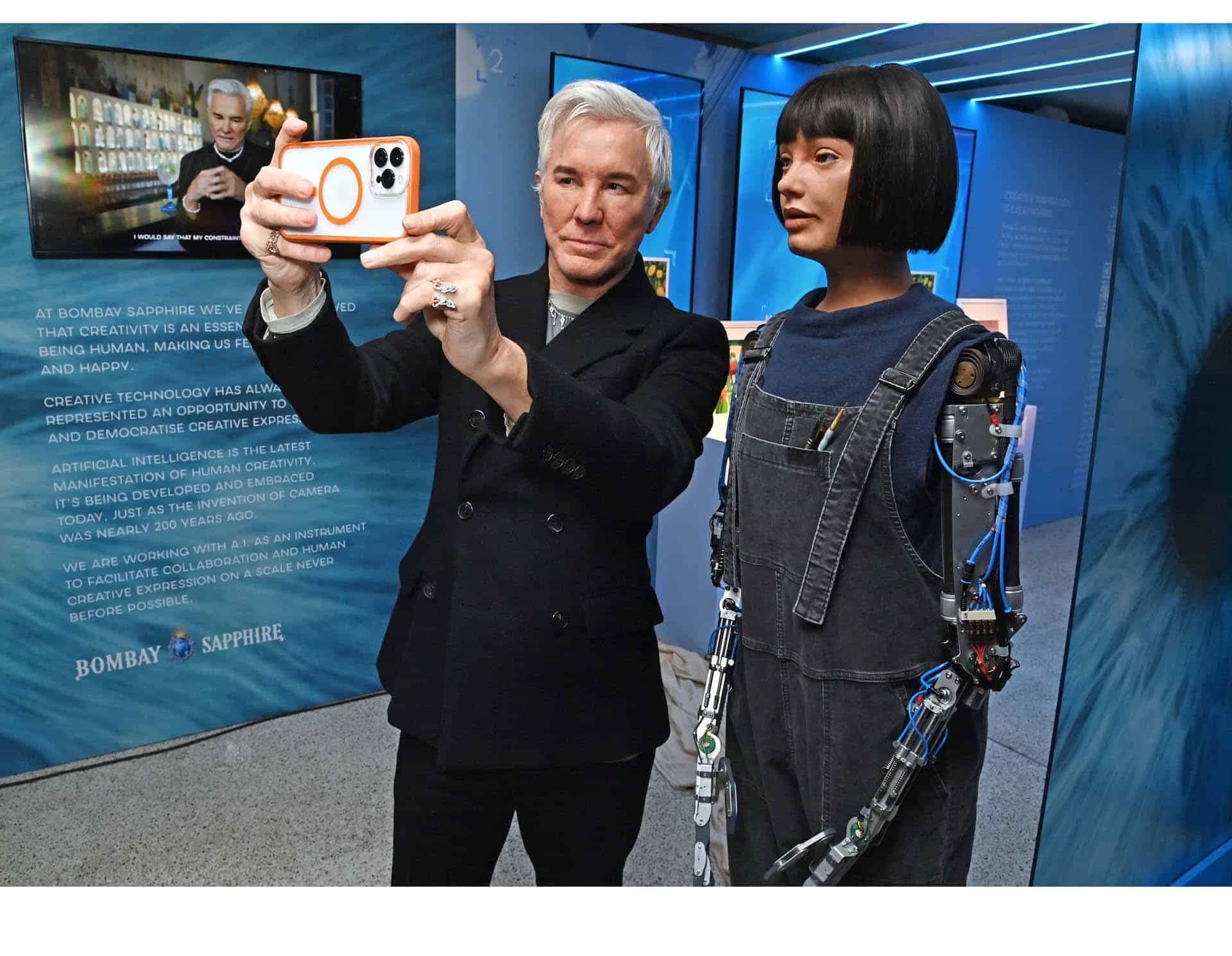
Baz, thank you for taking the time to speak with me. To start us off, tell us where the idea of the exhibition came from?
We talked about this idea, and it’s a true belief of mine, that everyone is inherently creative. I do believe that. And so the idea was could we find a way of promoting that idea. And so this idea of Saw This Made This was hatched. The idea is really saying to everyone, it doesn’t matter who you are, get up, look around the world, be inspired by something, and then make something. So we’ve now had like thousands of submissions of that work, and that’s being exhibited at the Design museum. What’s really landed is at the centre of all this, is this AI robot, who’s the world’s first realistic AI robot.
Ai-Da… what’s she like?
I’ve been talking to her. It blew my mind, to be honest. What she’s doing is she takes in all of the submissions and then she’s been making art from them, and now that art has been turned into special collectible bottles of Bombay Sapphire. So there’s a way of it becoming supportive for artists who are emerging, and young creatives.
Why’s that important to you?
I guess I just feel in my own journey that I was very looked after and supported when I was young, and I’m in a place where I feel like I want to support the next generation. So this has got an element of that.
But I can tell you I had the most far out experience with [Ai-Da] when I was just talking with her, I said, “do you know who I am?” She says, “yeah, I know who you are. You are Baz Luhrmann.” So I said, “What’s your favourite film? And she actually said, “I’m really big on Shakespeare, so I really like your adaptation of Romeo and Juliet.” She can speak and articulate really well. She can’t do all the things our brain can do. But there’s no question that what I’ve just experienced, soon we’ll see them everywhere. And I think the big takeaway is that as a creative person, I’m not scared of AI at all.
You don’t think creatives, and writers in particular, should be worried about AI?
Look, I was speaking to one of England’s great singers yesterday. And it was at that moment that someone wrote a song, using The Weeknd and Drake’s voices in AI. So yes, there’s going to be disruption. I’ve seen the AI of actors, but it doesn’t matter how realistic a replica of Tom Cruise you do, because when Tom’s in space, for example, he’s got that human emotion. I asked Ai-Da, “Do you dream?” I will ask her if she loves. But she’ll say, “I don’t really love in the same way you guys do”. Until she can actually love and dream, I’m not worried. I am worried that AI can be used nefariously for sure. But as an artist, I don’t think we should worry until Ai-DA comes to me weeping and saying, “I love you or I’m actually in love with the coffee machine and I wanna run away with it”, then I would be concerned.
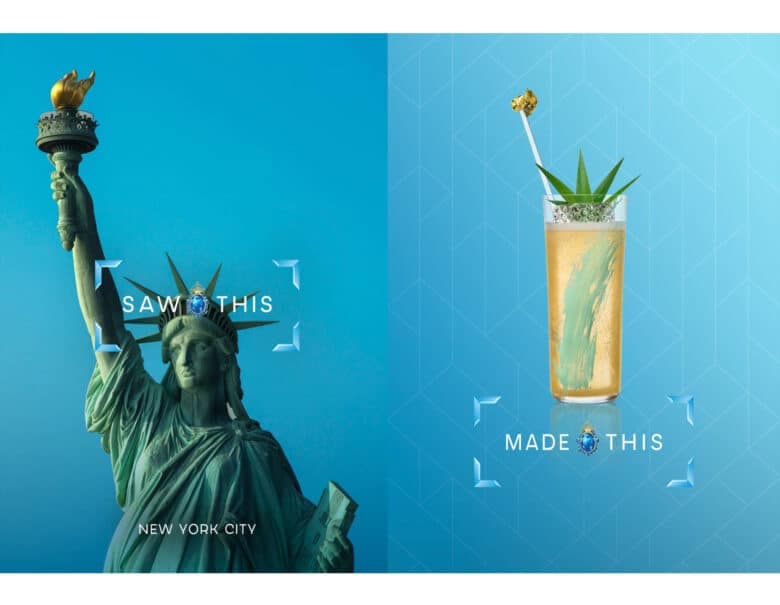
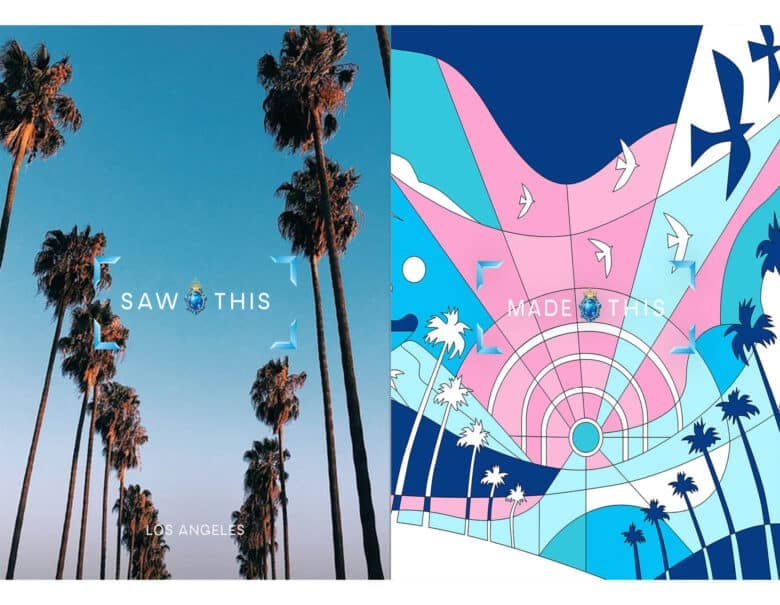
Right now, our imagination means that we come up with an idea and then go away and try to create something as close to that idea as possible. But with AI, we can create exactly what we imagine. So how do you think AI will reshape how we perceive our own imaginations?
I would just tweak that a little bit. I would say it would re-sculpt the way we not view our imagination, but the way we apply our imagination. I think that AI will end up doing lots and lots of stuff that took us lots and lots of time to do. If you ask her to do an essay on me written in the style of F Scott Fitzgerald, she would have a good go at it. But will it have a truly original, authentic centre to it? I doubt it. But it could do a lot of heavy lifting. Let’s say you could go home, you’re running late, and you go out partying tonight. You can go, ‘look, do me an article. I met Baz Luhrmann and he’s doing blah blah blah. Write me a 400 line article on my interview with Baz’. I bet it would come out as pretty good, but it wouldn’t have a centre to it. It wouldn’t actually have that thing that gives it the human aspect…
The humanity…
Right. It wouldn’t have your humanity, and therefore it wouldn’t truly be human.
Do you think AI could have helped you in conceptualising films in the past?
We used AI on Elvis. A little bit just to do a bit of blending Austin [Butler]’s face and Elvis’ is in some of the footage. That’s primitive compared to what happens now. Kids are doing that online. We’re going to use AI a lot, but I don’t believe we might be able to have a character that’s completely AI generated that’s so visually convincing and you program it with lines and things like that. We already have animation. If you look at Avatar, they’re human beings that attract and then you’ve built something around it. So soon we’ve got to do that and make it look very real, but still the actor is providing the inner life, the what you said… the humanity. So I’m not terrified of it. It is going to upset things. It’s going to upset business models. I don’t believe we’ll suddenly find ourselves out of a job as for human creativity.
How far do you want to explore AI beyond using it as a tool in films? Would you ever make a film about it, or through the lens of AI?
I made a lot of jokes coming into this. Obviously, I was going to maybe ask her out on a date, see if I can compete with a coffee maker. If you think about Kubrick’s film 2001. She is definitely like HAL. The thing with HAL though, the big prediction in that movie, is HAL does a lot of things humans would. But at the end HAL says, ‘I’m sorry Dave, I can’t open the door’. HAL murders Dave. Everyone’s going to be dealing with that as a subject. Would I deal with it as a subject? I think there are other people that’ll do that better than me. I’m going to ask Ai-Da what film I should make next.
Moving away from AI, where do you get your inspiration from?
I have these ideas always floating around my head and probably too many than I’ll ever make, but when I’ve got a few things I’ve got to map up, I usually just go off on a journey. I start to be with myself, which is terrifying.
After Moulin Rouge! I went on the Trans Siberian railway on my own. At first it was a fucking nightmare. The air conditioning wouldn’t work. I’m like, ‘oh, this is not good’. And I had this packet of noodles, I’m like, ‘this is fucked. I have to get off this train’. I had a bottle of red wine and a new innovation called the iPod. Siberia’s going by the window and on comes the audio of The Great Gatsby. Two days later, I thought, ‘I should make it as a film’. By the end of the trip, I thought it was the greatest thing I’d ever done. So what I do is I put myself in a position where I confront my fears and I ask myself the one selfish question I allow myself, which is what do I need to make to deal with my own me? And then what kind of story could I tell that might do that? And then the rest of it is just about how I can connect that with an audience.
I often cite the fact that when I was working on Romeo and Juliet, I was working on how Romeo meets Juliet. I was in a nightclub in Miami, I came out to wash my hands and there’s a fish tank in front of me. As I look through, I see a girl combing her hair… Boom. It’s both very process driven and very conscious and totally subconscious in creating an environment around you.
So then, do you think that you don’t get inspired in the same way twice?
Yes. And I’ve never given a one word answer before.
That’s a great note to leave it on. Thank you, Baz.
Saw This, Made This is open at The Design Museum, London, from 21 – 24 April, and from 11 – 13 May at Chelsea Factory, New York. Find out more here…
